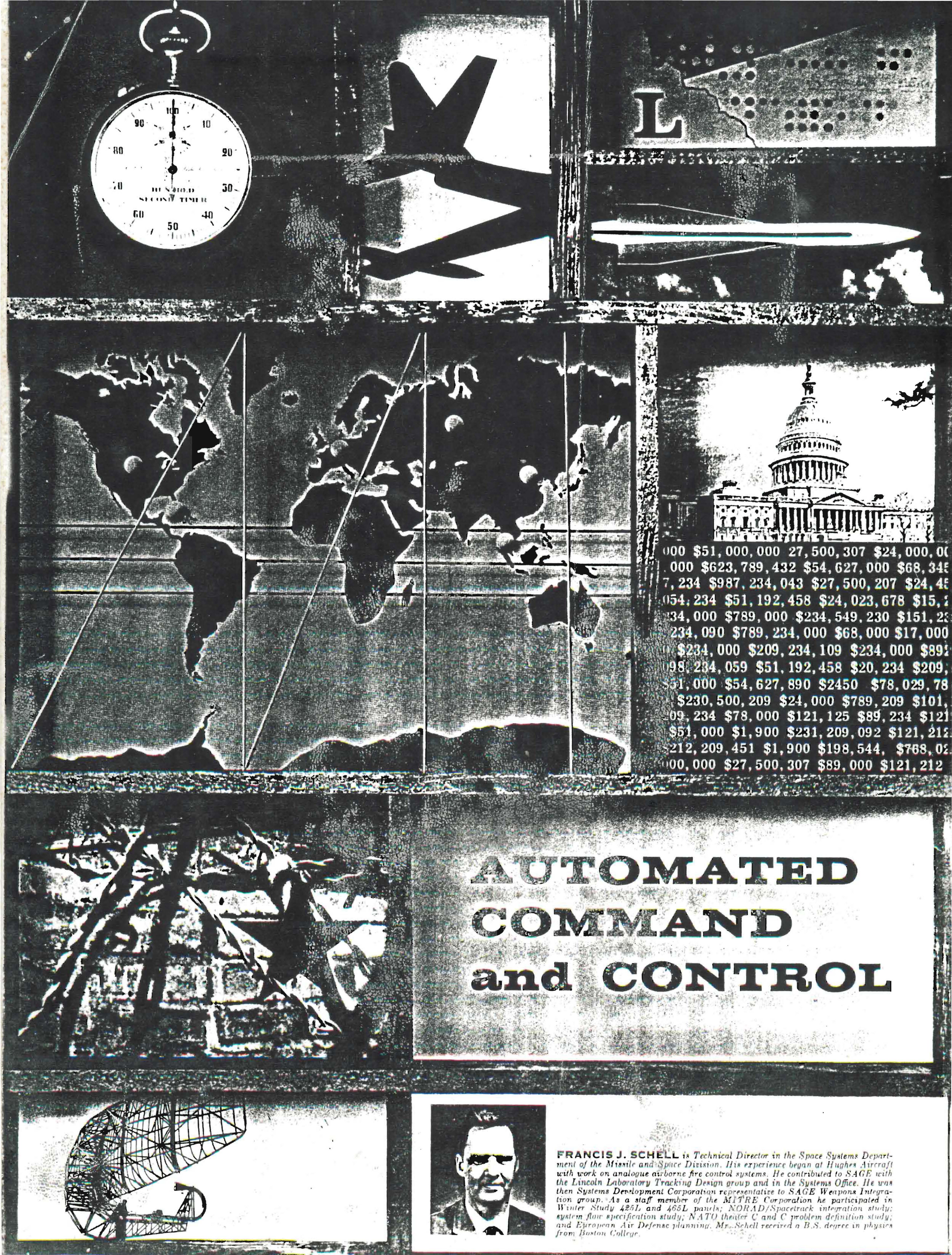

FRANCIS J. SCHELL is Technical Director in the Space Systems Department of the Missile and Space Division. His experience began at Hughes Aircraft with work on analogue airborne fire control systems. He controbuted to SAGE with the Lincoln Laboratory Tracking Design group and in the Systems Office. He was the Systems Development Corporation representative to SAGE Weapons Integration group. As a staff member of the MITRE Corporation he particiapated in Winter Study 425L and 465L panels; NORAD/Spacetrack integration study; system flow specification study; NATO theater C and C problem definition study; and European Air Defense planning. Mr. Schell received a B.S. degree in Physics from Boston College.
DURING and prior to World War II, the military products of the electronics industry were used for sensing and for communications between commanders. After the war, with the development of high speed digital computers and the improvements of cathode ray display devices, it became possible to automatically collect, transport, and process data for the benefit of military commanders. The revolution in real-time force management which followed was motivated by a potential enemy's achievement of nuclear weapons and long-range strategic bombers in the 1950s. As a result, we have seen emerge the concept of automated command and control — a term which embraces the vast technology required to service the information needs of the military/political organization(s) involved in a given command situation.
The Air Force L systems, which represent over ten years of effort and many billions of dollars expenditure, provide a vehicle for assessing the accomplishments in automated command and control thus far. In this paper we will survey the command and control development by reason of these L systems and discuss a few trends. During this same period several other major changes occurred which must be alluded to in the discussion, but which are themselves too broad to cover in detail here. They are:
In attempting to describe the L systems, an "information triangle" is useful (see Figure 1). The list on the left places those organizations with breadth, authority, and responsibility at the top of the list, with descending subordinate elements. In normal organizations with hierarchic form, the flow of information starts at the bottom and proceeds upwards and the conclusions drawn from the data flow downwards.
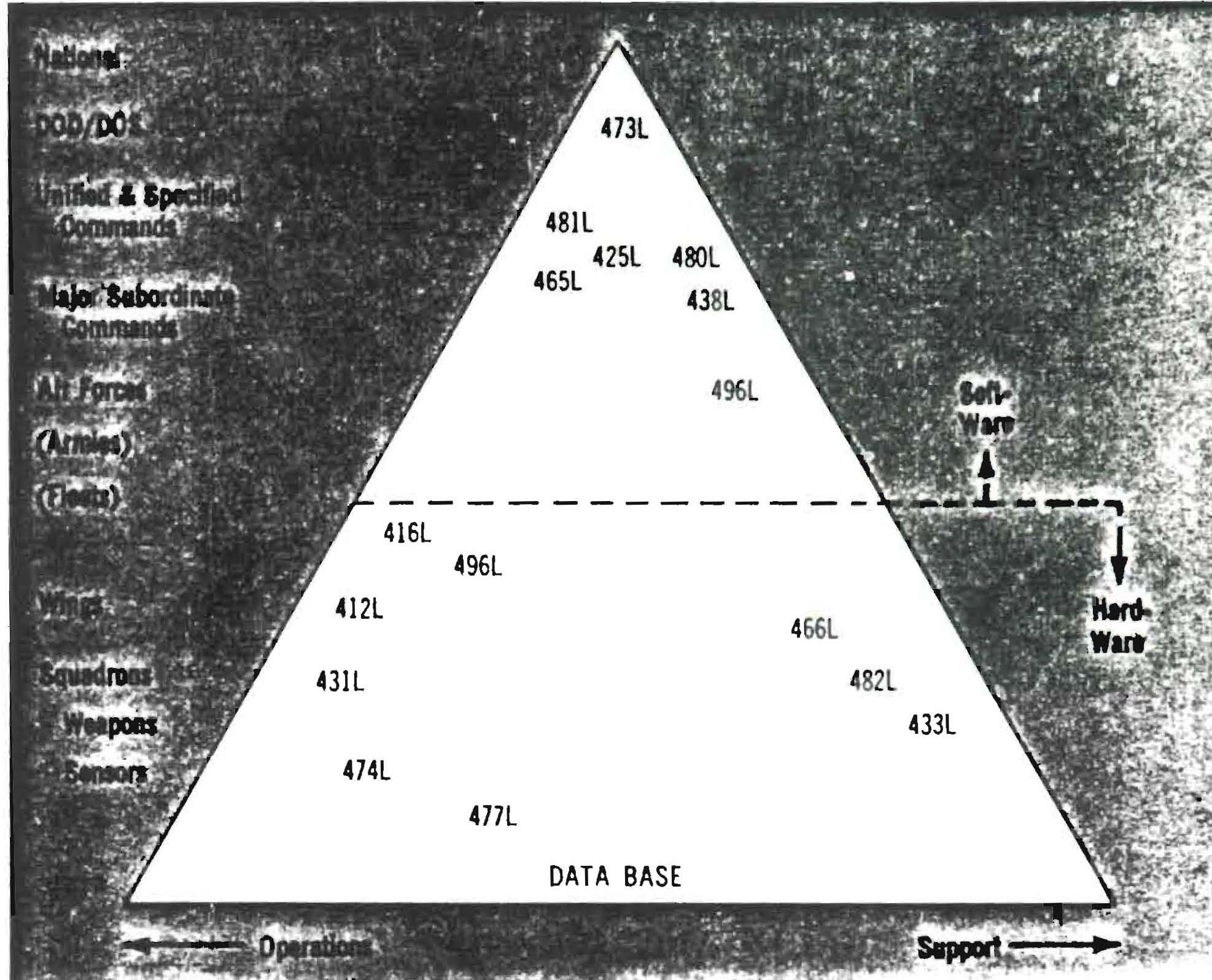
Figure 1. L systems information triangle
Thus, the base of the triangle consists of data, with sensor systems to collect and do some sifting prior to passing the data upwards. In general, the L systems above the middle of the triangle have fewer and fewer sensors — they rely on others to feed in data. Those near the bottom, i.e., the sensor systems, therefore, emphasize hardware, while those at the top center on "software" — i.e., information systems, computer programs, data interpretation techniques, etc. The significance of the left to right ordering relates how directly the system is linked to an operational mission. Direct relationship is indicated by position to the left, support relationship by position to the right. The over-all picture is of the greatest importance. The two kinds of systems — data collectors (sensor systems) and data interpreters (higher Command and Control systems) both serve a structured organization. L systems are summarized by purpose in Table I.
The sensor systems generally conduct surveillance of air space, or of the electromagnetic spectrum. They do this to detect possible hostile activities, or to allow us to control our aircraft for safety or for combat. The advantages these systems confer are easy to visualize.
The data interpretation systems (e.g., 425L) are somewhat newer in concept. Their purpose requires more lengthy discussion. The mere manipulation of data formats is a relatively sterile operation. The simple comparisons of data collected from several sources can be viewed as a low level of error checking. The examination of bodies of data for internal consistency begins to approach the useful functions of data processing on a large scale. The most useful functions of data processing approach the intellectual processes of the mind in extraction of information from data, the abstraction of intelligence from the information, and the production of decisions based on the intelligence presented. In the case of present L systems, the higher processes of abstraction and decision belong primarily with the human operators, usually interacting with the data processor, which has done the bulk of the other data checking, calculation, and presentation.
Three L systems will be described here. They include one system which mainly comprises sensors (474L or BMEWS); one which emphasizes data processing (465L or SACCS); and one which combines both to a high degree (416L or SAGE). The material is taken from Electronic System Division news releases and similar open literature.
The Ballistic Missile Early Warning System is a network of three bases spreading long-range, radar signals over the top of the world. This system is aimed at discouraging attack and global war by warning of ballistic missile approach in sufficient time to permit retaliation. The bases are located in Thule, Greenland, 600 miles north of the arctic circle; in Clear, Alaska, north of Mt. McKinley; and in Fylingdales Moor, Yorkshire, England.
Program direction for BMEWS is handled by the United States Air Force in coordination with the Royal Canadian Air Force and the Royal Air Force. Some of its outstanding features are:
The initial contracts were awarded on January 23, 1958. The construction schedule was set by the USAF on May 10, 1958 so that
A few notable construction statistics are:
The Strategic Air Command Control System is a data presentation, completely integrated transmission and processing system which allows rapid command decision-making based on accurate, current information.
The information gathered and processed by the system is presented to the SAC Commander-in-Chief and his staff at SAC Headquarters on 16 large wall screens. In the form of maps, charts and alphanumeric tables, the information is projected onto the screens by four group display generators. Each generator has the capability of a wide range of combinations. It may project four separate displays or a combination of displays and overlays. Its capacity includes black and white displays or a combination of colors. High speed, hard-copy printers provide a detailed and permanent record.
Requests for displays or printed information are made from request panels. Displays may be changed in a matter of seconds by depressing a combination of keys which constitute a code. By using these request panels, SACCS can also be interrogated to provide additional information on those displays which are not automatically updated.
The viewing areas provide an unrestricted view of all displays for the support staff on the main floor and the command staff on the balcony. Printers and request panels are strategically located on both levels.
Force alerting in the SAC system is accomplished through a semi-autumatic alert transmit panel. Like the famed red telephone, the panel is within easy access of the command staff. Through the facilities of the data presentation complex, the SAC Commander-in-Chief has complete, instantaneous, and positive control of the Strategic Air Command force.
The displayed information originates at Remote Communication Complexes. As the word "remote" indicates, these complexes are located at SAC bomber, missile, and logistics support bases throughout the world. They tramimit information such as aircraft availability, personnel status, or missile readiness and they receive command and alert messages.
Messages are entered by one of two input devices. An electric typewriter keyboard is used for narrative messages and a semi-automatic message composer is used for standard messages with few variables. Each Remote Communication Complex can have up to 32 input/output devices which can accommodate as many as 1500 messages per hour.
Outgoing messages are error checked, encoded for security and converted to a tone signal for transmission. Incoming messages travel the same path in reverse. Standard messages are printed out on electrostatic hardcopy printers at the rate of 3,000 words per minute. Sounding klaxons and flashing red lights on an Alert Receive Panel indicate alert conditions as transmitted by SAC Headquarters. Emergency War Order options are received through the printers after the Remote Communication Complex has acknowledged the signal.
For maximum transmission reliability, each Remote Communication Complex is connected with two headquarters. Should the transmission link to the primary headquarters become inoperative, the Remote Communication Complex automatically switches to its alternative headquarters.
All messages transmitted within the System — as well as requests for display information originating at SAC Headquarters — are automatically serviced by Electronic Data Transmission Control Centers. As the primary switching and routing center for SACCS, an Electronic Data Transmission Control Center is located at each of the four SAC Headquarters.
In addition to its prime switching function, the Electronic Data Transmission Control Center has several other features. It maintains a record of all processed messages and error checks them automatically, By means of its Fault and Facility Control, it automatically monitors the operation of the transmission components. Display information is stored on magnetic drums until requested.
Information entered into SACCS is processed by the Data Processing Central — the heart of which is a large-capacity, high-speed, transistorized digital computer.
War plans are stored in the computer's memory, and are compared to actual events as reported by the Remote Communication Complexes. If the computer detects a serious deviation between actual and planned events, it automatically alerts the SAC staff in the Data Presentation Area.
To accomplish the many tasks required of the Data Processing Central, the computer has a magnetic core storage of more than 65 thousand computer words, magnetic drum storage of almost 280 thousand words, and magnetic tape storage of over 34 million words. Storage capacity may be increased by adding cores, drums, or tape units. The computer can transfer a word from core storage to the processing unit in 2½ millionths of a second-enabling it to perform more than 300 thousand arithmetic or logical operations per second.
The Semi-Automatic Ground Environment is an air defense system constantly being updated to meet new threats and use new automated technologies. The nerve centers of SAGE are the Direction and Combat Centers. The nation is subdivided into twenty-one sectors, and a SAGE Direction Center is responsible for the defense of a geographical sector. Combat Centers, located in three Direction Center Buildings, monitor and supervise groups of Direction Centers.
The Combat Centers are on the East Coast (Syracuse, N.Y.), West Coast (Tacoma, Washington), and inland United States (Madison, Wisconsin). If one or more Direction Centers were knocked out in an air battle, the Combat Center would direct other DCs to take over the control. Also, the Combat Center reports the over-all picture to higher headquarters — The North American Air Defense COC (Combat Operations Center).
A Direction Center contains two duplicate computer systems, one always available to back up the other if anything should go wrong with either the computer, the input-output, or the display equipment. Although only one computer is actually supplying data to the air defense operators, the stand-by computer is processing the same information so it can take over without a second's delay.
In SAGE final decisions of actual employment of weapons are reserved for human judgement. The system presents information and alternatives, but the operator makes the choice. This is the reason why SAGE is called "Semi-Automatic". The "Ground Environment" part of the name refers to the over-all complex of radars, communication lines, transmitters, data processing equipment, and all other parts.
Into the SAGE computer comes the myriad bits and pieces of data received from the radars. The computer also receives civilian and military flight plans from the FAA and military flight services. There are more than 30,000 scheduled flights in the United States every day and many more that are not scheduled. These flight plans must be compared with radar readings — bearing, height and speed of aircraft — to detect any intruder trying to hide in our crowded skies.
The SAGE computer takes the radar reports, flight plans, and other data, automatically screens out unnecessary details, and then presents essential air defense information in symbolic form to Air Force technicians manning the television-like consoles. Push-buttons at the consoles allow the operators to ask the computer for specific facts or special displays: such as, what are all the aircraft tracks in our area? How many aircraft are above 10,000 feet? Where are all the unknown aircraft? What weapons are ready to go? Answers are immediately available on any of more than 85 consoles.
With the thousands of planes involved, a system faster and more reliable than the hand-plotting of earlier days had to be developed. SAGE automation links together numerous radar sites to give a more comprehensive picture of the air situation over a large area. Only a computer, operating at speeds of microseconds, could figure the hundreds of thousands of mathematical stages involved in defense combat against a mass enemy raid. "Real-time" figuring — the reason for our Electronic Systems Command's command and control systems — becomes survival time.
The SAGE computer calculates where the enemy planes are or will be, and which of our weapons will make the best intercepts — figuring all the variables of direction-distance vectors of targets, weather conditions, location of Air Force bases and missile sites, and reserve-readiness strength.
At the direction of Air Force personnel, the computer will give instructions directly to fighter planes. When the coded message reaches the plane, it can go either to an automatic pilot — so the interception will be directed entirely from the ground — or to the pilot's instrument panel so he will complete the interception.
Generally, since more and broader problems are being attacked, the problem analysis investment is increasing greatly. This is expensive! A rationalization should not present SAGE as being cheaper in money, or men, than the system for manual air defense which it replaced. Anticipated savings in men or money are usually illusory.
If econorny is not a valid motive for developing electronic command and control, why are these information processing systems being developed? What are the forces which have resulted in their purchase?
Figure 2 is an illustration of a trend which has been in evidence for a decade, namely centralization of responsibility. By this is meant that significant actions which once could be taken at major subordinate command levels, such as USAFE (United States Air Force Europe) and PACAF (Pacific Air Force), now require a more detailed approval and monitoring by higher echelons of command; initially the next higher, and subsequently, at increasingly higher levels. According to reports, the Congo air-lift was coordinated from EUCOM (European Command). Command post actually appeared at the State Department level for a while, at least.
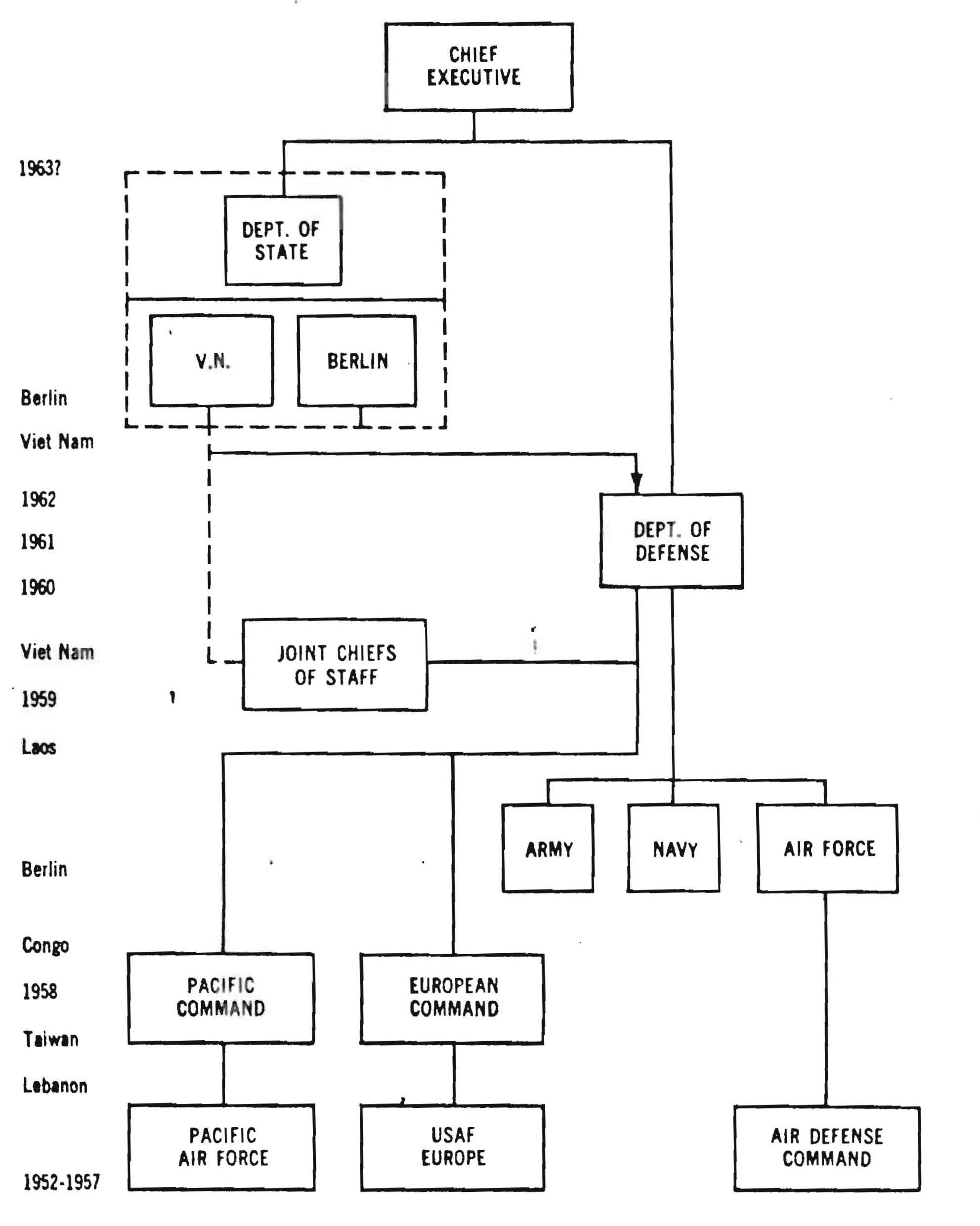
Figure 2. Centralization of responsibility
This centralization trend resulted from the increased importance of the actions which came about as nuclear arms became more widely deployed, so that confrontations between small elements of forces became critical to international relations. Aggravating the situation was the necessity of obtaining sufficient warning, so that activities of forces could be viewed as provocation or as sources of warning.
The presidential supplementary budget request of March 1962 recognized this central tendency: "Diplomacy and defense are no longer distinct alternatives ... both must complement each other." And again, "The basic decisions on our participation in any conflict and our response to any threat ... will be made by the regularly constituted civilian authorities." And once more, "Our weapons systems must be usable in a manner permitting deliberation and discrimination as to timing, scope and targets in response to civilian authority ... "
Even where events appear to be minor and isolated, the possibility that they are part of a coordinated set of provocations, such as Taiwan and Lebanon, cannot be dismissed. Thus, the centralization trend appears likely to continue and to require detailed reporting to the central authority.
Another consequence of the technological revolution is that the time available for decisions diminishes as the seriousness of the problem increases. (See Figure 3). Where the problems involve relatively few lives, the decision lead time can be substantial; where the problem is general war, with hundreds of millions of lives at stake, the time for decision could be measured in minutes.
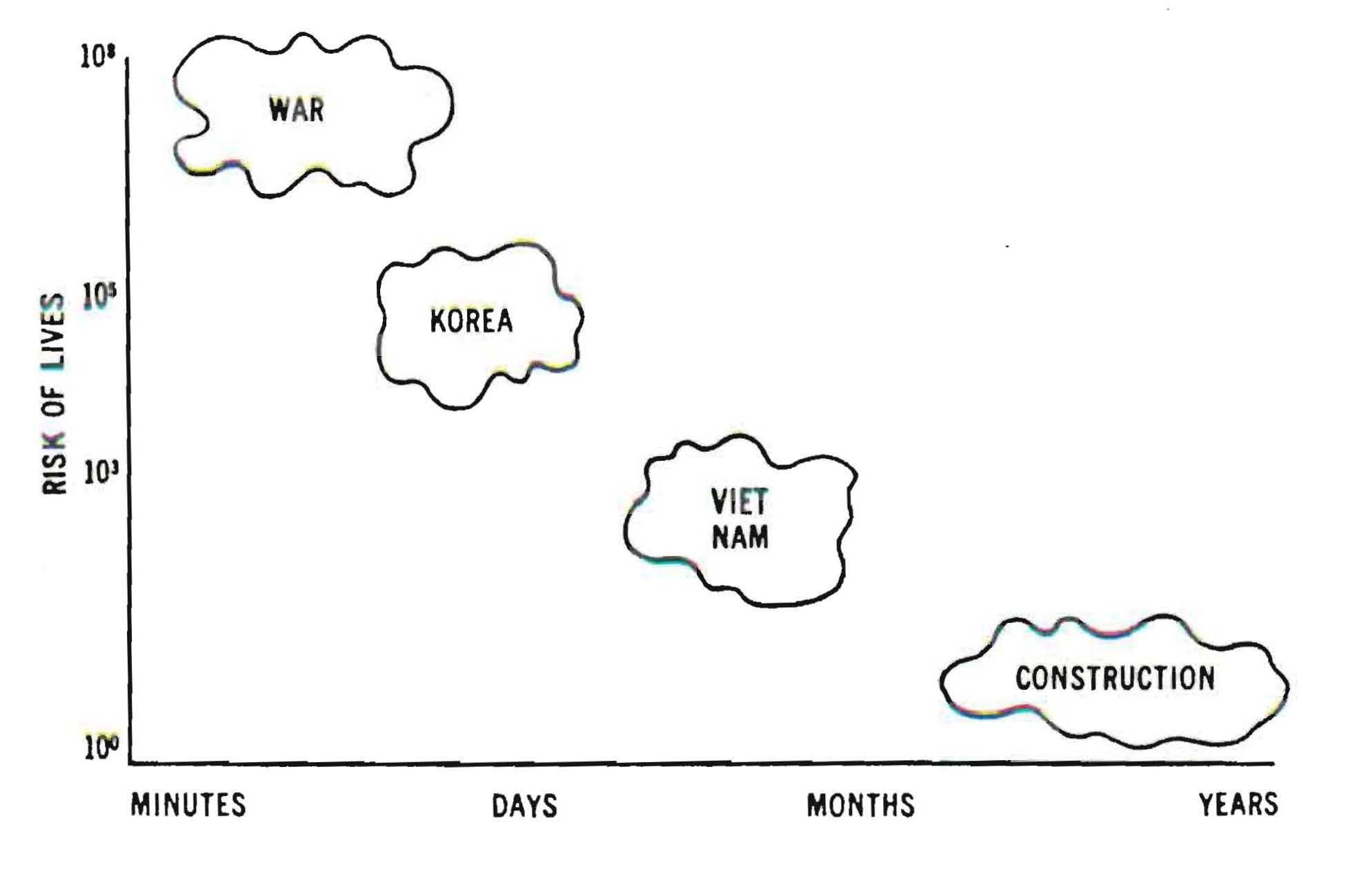
Figure 3. Urgency
The combination of these two factors — centralization and urgency — has led to greatly increased complexity. Using the flow rate of information as an index, Figure 4 illustrates the growth in complexity of L systems since 1954. These influences have been operating simultaneously with the greater dispersion of forces to the NATO and SEATO area, and the spreading of tasks throughout the world. The consequences of this scatter have not been shown in the preceding figures, because the close coupling of all these forces has not yet occurred. The realignment of responsibilities towards world-wide geographical commands has complicated and delayed the definition of the command problems and the application of automation to them.
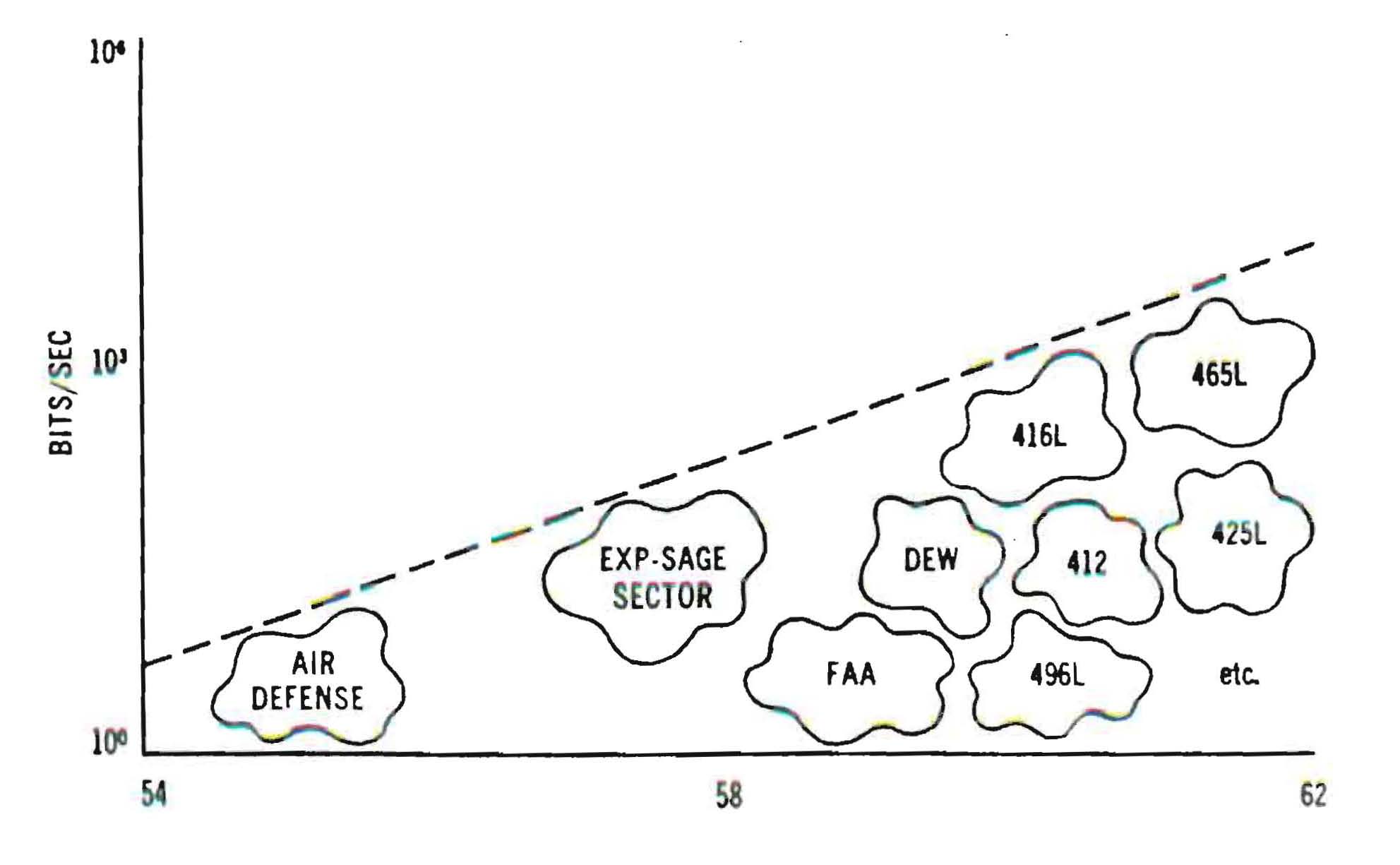
Figure 4. Growth in complexity of L systems
Some inter-relationships in the L systems are shown in Figure 5. An attempt is made to indicate the span of organization over which each L system operates by reference to the scale of organizational levels on the left of the figure. In general, the relationships are more in the nature of a cooperative tie-in than of systems design interlocking.
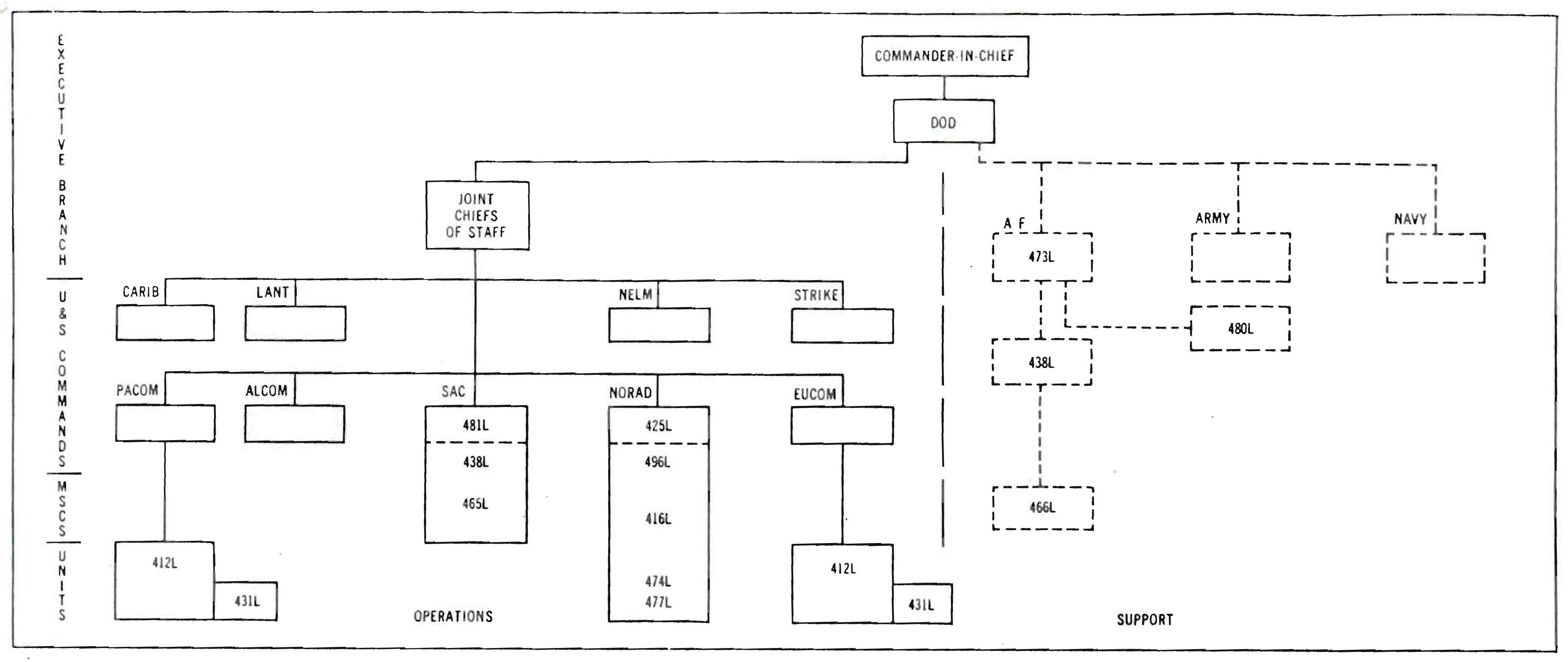
Figure 5. Inter-relationships in the L systems
The integration within the Air Force family of the L systems is proceeding on a technical basis. Functional integration of the systems is limited. If functional integration of the commands and their systems were to occur, another large increase in complexity would result.
Table I | |
| Air Force L Systems | |
| 412L. | Air Weapons Control System An overseas theater tactical air weapons control and warning system. |
| 416L. | SAGE Air Defense System A semi-automatic area air weapons control and warning system including the Back Up Interceptor Control (BUIC) for detecting, identifying, tracking, and providing interceptor weapon direction against airbreathing threats to the United States and Canada. |
| 425L. | NORAD Combat Operations Center A system, hardened for sustained operations in the face of a nuclear allack, which collects, processes, and displays data to assist the Commander-in-Chief, North American Air Defense Command in commanding and controlling his forces. |
| 431L. | Traffic Control and Landing System A program for updating the traffic control and landing systems at United States Air Force bases throughout the world. |
| 433L. | Weather Observation and Forecasting System A global, semi-automatic electronic system for modernization of the Air Force Air Weather Service to provide high quality and timely weather observations, information, studies, advice and forecasts in support of military operations and command and conlrol systems. |
| 438L. | Aerospace Intelligence Data System A system for high-speed processing of worldwide intelligence data. |
| 465L. | Strategic Air Command Control System A system which collects, processes, and displays data to assist the Commander-in-Chief, Strategic Air Command in commanding and controlling his forces. |
| 466L. | Electromagnetic Intelligence System A worldwide system for collecting intelligence by electromagnetic means and processing and transmitting it to users by high-speed electronic equipment and techniques. |
| 473L. | Headquarters USAF Command and Control System A data processing and display system to assist Headquarters USAF in making command decisions. |
| 474L. | Ballistic Missile Eearly Warning System A system to provide early warning of a mass ballistic missile attack on the North American Continent from the North. |
| 477L. | Nuclear Detection and Reporting System A system to provide the North American Air Defense Command and other military and civilian agencies with essential information on nuclear detonations occurring within the area of responsibility of the North American Air Defense Command. |
| 480L. | USAF Aerospace Communications Complex A program of support for the Air Force segment of the long-haul Defense Communications System and for the USAF ground/ aerospace communrcahons. |
| 481L. | Post Attack Command and Control System A system to enable the Commander-in-Chief, Strategic Air Command to control his forces in the event that a nuclear attack destroys or seriously degrades his normal facilities. |
| 482L. | Emergency Mission Support System A system which will provide air transportable air traffic control, communications, and navigational aid facilities in support of air operations where existing facilities are not available. |
| 496L. | Space Track A system for detecting, tracking, identifying, and cataloging orbiting objects. |